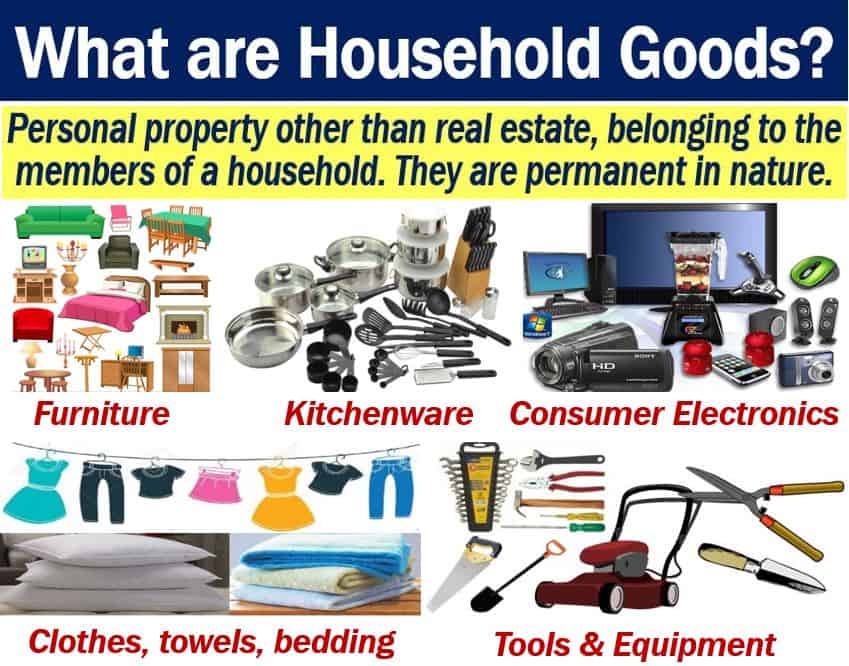Household Goods are products that we buy and use within our homes. They usually represent all our personal property other than real estate and vehicles. Examples include kitchenware, furniture, clothing, bedding, books, tools, etc.
Some people do not include clothing in this category because they are not items we use specifically for our homes. However, insurance companies, for example, do.
In the context of personal finance, household goods represent a considerable portion of a family’s assets and are factored into the calculation of an individual’s or family’s net worth.
The term refers to assets that form part of our net worth even though they do not have high liquidity. A person’s net worth equals their assets minus their liabilities, i.e., everything they own minus everything they owe.
Household goods are products that members of the household buy and use within their home. The term ‘household’ refers to the physical structure and also the people who live in a home.
When economists, for example, talk about ‘household spending,’ they are referring to people. Specifically, they are talking about each group of people who live under the same roof.
Goods are products, i.e., things that people make or grow and then try to sell.
A household is a social unit consisting of a group of people who share a home. Households may contain a traditional nuclear family, adults who share the rent, a person living alone, etc.
Household goods – ‘permanent in nature’
Therefore, food is not in that category because it is not ‘permanent in nature.’ If I buy an apple today, by the end of the week it has gone because somebody ate it.
However, devices and utensils we use to prepare food are household goods. My gas stove is ‘permanent in nature.’ After I buy a gas stove, it is still there several months and even years later.

Economic role of household goods
Companies that produce household goods make cyclical consumer products, according to the Thomson Reuters Business Classification. Thomson Reuters organizes them into three sub-categories:
– Home furnishings, such as tables, chairs, beds, and wardrobes. This sub-category also includes antiques, collections of art, rugs, lamps, and wall clocks.
– Appliances, tools, and housewares, including toasters, refrigerators, air conditioners, and cutlery.
– Consumer electronics such as televisions, DVD players, video games, and remote controls. Some businesses may refer to TVs, video games, and game machines as entertainment items.
The production and purchase of household goods form an important part of the national economy.
The secondary market for household goods, such as yard sales, thrift shops, and online marketplaces, significantly contributes to the reuse and recycling of these items.
